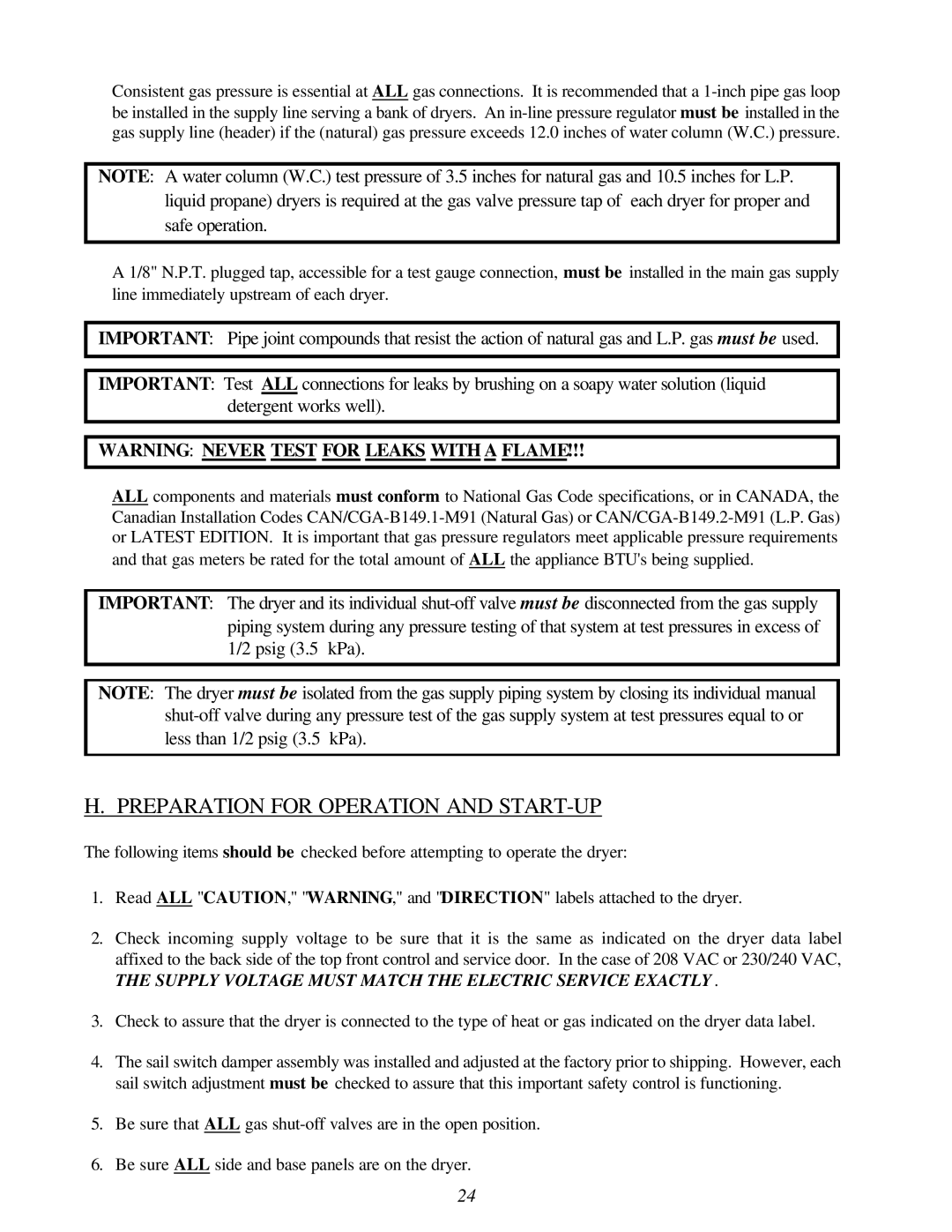
Consistent gas pressure is essential at ALL gas connections. It is recommended that a
NOTE: A water column (W.C.) test pressure of 3.5 inches for natural gas and 10.5 inches for L.P. liquid propane) dryers is required at the gas valve pressure tap of each dryer for proper and safe operation.
A 1/8" N.P.T. plugged tap, accessible for a test gauge connection, must be installed in the main gas supply line immediately upstream of each dryer.
IMPORTANT: Pipe joint compounds that resist the action of natural gas and L.P. gas must be used.
IMPORTANT: Test ALL connections for leaks by brushing on a soapy water solution (liquid detergent works well).
WARNING: NEVER TEST FOR LEAKS WITH A FLAME!!!
ALL components and materials must conform to National Gas Code specifications, or in CANADA, the Canadian Installation Codes
IMPORTANT: The dryer and its individual
NOTE: The dryer must be isolated from the gas supply piping system by closing its individual manual
H. PREPARATION FOR OPERATION AND START-UP
The following items should be checked before attempting to operate the dryer:
1.Read ALL "CAUTION," "WARNING," and "DIRECTION" labels attached to the dryer.
2.Check incoming supply voltage to be sure that it is the same as indicated on the dryer data label affixed to the back side of the top front control and service door. In the case of 208 VAC or 230/240 VAC,
THE SUPPLY VOLTAGE MUST MATCH THE ELECTRIC SERVICE EXACTLY .
3.Check to assure that the dryer is connected to the type of heat or gas indicated on the dryer data label.
4.The sail switch damper assembly was installed and adjusted at the factory prior to shipping. However, each sail switch adjustment must be checked to assure that this important safety control is functioning.
5.Be sure that ALL gas
6.Be sure ALL side and base panels are on the dryer.
24
